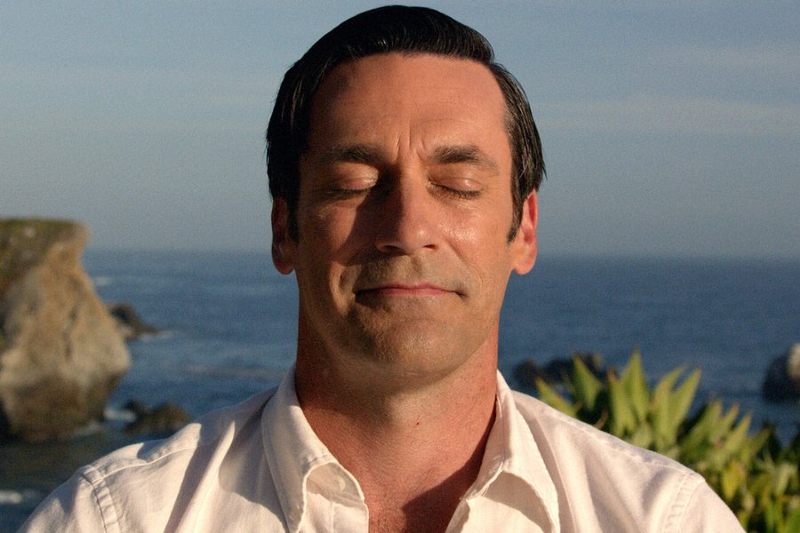|
Happy 2020! Here at Logosphere, we’re celebrating the conclusion of a productive year that included new clients, big projects, and broader ways of serving the companies, organizations and people in our network. It’s always gratifying at this time of year to pause and look back over the year’s accomplishments and milestones.
In 2019, Logosphere:
We’re growing our network and range of services in new and exciting ways. Let us know if you’d like to start a conversation about what Logosphere might offer your company or organization. We hope 2019 was a productive and fruitful year for you as well. Here’s to community, connection and great stories in the New Year and Beyond! I’ve had a couple of coffee dates over the past week with folks wanting to pick my brain about Logosphere Storysmiths—what we’re up to, how and why we formed the business in the first place, and the kind of work we’ve been doing for our clients. These conversations have given me the opportunity to take a step back from cranking out stories and strategies for our clients and try to articulate some answers to the big questions of Why? and How? that underpin our work. First, our origin story: By the time Quinton left Minnesota Monthly magazine in late 2016, I had been hustling as a freelance writer for a few years, building up a base of business writing clients in addition to working on journalistic assignments and pitches for a range of local and national publications. Quinton had just spent three years witnessing the challenges of the print magazine world from the inside. He’d become convinced that joining me in the self-defined, scrappy, uncertain, but empowering world of self-employment would provide at least as much security and stability as another job in the publishing industry, if not more. So we decided to throw our lots in together, figuring that together we’d be more formidable than either of us alone. Rather than compete with each other as independent freelancers in the same field, we’d capitalize on our existing trust and symbiotic working relationship and form a team—a two-for-one package of a writer/editor (we both take turns in each role) that can can crank out high-level, strategic, sophisticated writing more efficiently, in greater volume, and with greater precision and polish than any solo freelancer out there. We headed out to a local cocktail room one evening, filled several journal pages full of brainstorming for a name for our new business, and Logosphere Storysmiths was born. Logos: Greek for word, reason, or plan Sphere: An area of interest, activity, or expertise Storysmith: A skilled and practiced architect of stories (A word we invented, because that’s what word folk do) We’ve both read the writing on the walls surrounding the media industry. Spoiler alert: it’s ominous, as evidenced by the recent mass layoffs at Vox, Buzzfeed, and Vice and by this quote from outgoing Mic publisher Cory Haik: “Our business models are unsettled, and the macro forces at play are all going through their own states of unrest. If anyone tells you they have it figured out, a special plan to save us all, or that it’s all due to a singular fault, know that is categorically false.” The world is changing, and if you’re a coal miner, a trucker, or a journalist, it’s time to take a good, hard look at your options. But Quinton and I share a stubborn love for the form of magazine-style writing and reporting, the longform exploration of a profile subject or a trend or idea. Ultimately, we’re seekers, and we both do our seeking through writing, as do the best essayists, journalists, and those who were born with the particular karma of processing the world through words. When deciding what kind of writing services we wanted Logosphere to offer, we instinctively shied away from using the words “marketing” or “PR.” Not that there’s anything wrong with those things. But we wanted to see if we could make a go of it by focusing on the thing that really lights us up—the exploration and articulation of truth. Would we do catchy slogans, inventive naming, and eye-catching copy? You bet. But we knew that our skill in excavating nuance and complexity—and then distilling it into clear and compelling words and stories—represented a unique offering in the existing market of copywriters, ad agencies, and PR firms. We wanted to lean into the thing that set us apart: namely, a deep, cellular aversion to bullshit. Two years in, we know without a doubt that we’re onto something. The skills we gleaned (and continue to hone) through our individual journalistic and creative work translate to the business and nonprofit worlds better than we could have imagined. We approach our clients with a full arsenal of deep curiosity, an intuitive understanding of audience, and a strategic sense of how to reach that audience with stories that center their needs, questions, concerns, and aspirations. Whether in keynote speeches for leaders and influencers; case studies and white papers that illustrate value propositions with color and clarity; or branding exercises that help teams achieve lightbulb moments around identity and purpose, the combination of strategy and artistry we offer has proven to be wildly effective for our clients. Our first two years of business have been a rapidly escalating experience of education, adaptation, and experimentation—with gratifying and exciting results for ourselves and our clients and partners. We can’t wait to see what the years ahead bring. If you’re interested in learning more about what we do, and how our storytelling work can help you or your organization cut through the noise and reach your desired audience, we’d love to hear from you. Mo PerryMo is the co-founder and principal of Logosphere Storysmiths.  In the marketplace of ideas, there’s a long history of tactics geared toward persuasion, coercion, obfuscation, and a lot of other multi-syllable words that all point in one direction: away from truth and connection.
Now, more than ever, we live in a world of static: too many messages to process, with the majority trying to trick us into buying or believing something, or inflaming our sensibilities with a goal of monetizing our attention. It’s exhausting, it’s false, and it’s degrading the way we communicate with each other. But if authentic storytelling is they key to cutting through the static, how do we get there? What is a Story? A story is a narrative that says: Listen. I have something of value to communicate to you. Storytelling, by its primal essence, is generous, inclusive, and sincere. What’s Not a Story?
What’s the Point of a Story? From the first stories humans told, to today’s most effective narratives, good stories possess the quality of offering shared value and promoting mutual benefit. They illustrate an idea, moral, or lesson through sympathetic characters, conflict, and a clear outcome. Primal example: When I crossed that ridge, there was a lion there, so I recommend for your benefit that you stay on this side of the hill. A more contemporary example: Katniss toppled the oppressive Capitol regime through courage, collaboration, and love. Brand-based example: John was feeling inhibited from expressing his individuality and nonconformist creativity, until he got an Apple computer, which helped him unlock the full expression of his ideas. What Are the Basics? Storytelling has so much power because it is so basic—it’s hard-wired into what we are and how we live in the world. Compelling stories get our attention and make us want to share them with others. The structure of an effective story is the same across languages, regions of the world, and across time.
NEXT: Part Two. Avoiding common story-telling pitfalls and embracing the power of authenticity. Odds are good that I don’t have to convince you of the value of a robust content strategy. It’s a key feature of every halfway decent marketing plan out there, whether for sole proprietors, small businesses, or major lifestyle brands.
Developing and distributing compelling stories and insights keeps your brand front-of-mind for your audience, builds trust and communication, and establishes you and/or your company as a thought leader in your field. Providing authentic value to your readers in a likeable, sincere voice is the surest way to create engagement and turn readers into fans and fans into customers. Indeed: What else is there in your marketing toolkit that can inspire such feelings of familiarity, gratitude, and loyalty in your target audience? (I’m here to tell you, it’s not your coupons.) Content strategy is usually defined as the planning, creation, delivery, and management of content—and plenty of people seem to buy that. Job postings come across my radar every single day calling for a content strategist or specialist who can single-handedly plan, create, and manage a robust content strategy. And that’s where I say whoa, Nelly. Here’s a little thought exercise for you: Do the people who plan city infrastructure upgrades put down their laptops halfway through the workday and go pick up a hydraulic power pack on the closed lane of an interstate highway? (Maybe they should, at least this summer in Minnesota, but I digress.) Do artistic directors who plan and schedule a theatrical season of shows usually play the leading roles in those shows? No. Because planning and executing are two different skills. They use different muscles. And while it’s entirely possible that the city planner and artistic director are capable of drilling and acting, it’s not really the smartest or most efficient use of their time to toggle between such wildly disparate tasks. This is why I’m always slightly amused by these job postings that are essentially seeking a city planner with mad hydraulic power pack skills. Planning and running a robust content strategy is one thing. Creating the most artful, skilled, and compelling content (whether written, filmed, photographed, or displayed by aerial banner) is another. The skills aren’t mutually exclusive (I’m sure plenty of content strategists are decent writers/photographers/designers), but delegation of responsibility is no less important for creative departments than for city planners. Things a good content strategist needs to focus on include:
For many brands and organizations, there’s no need to take on another full time position dedicated solely to content development. With companies like Logosphere Storysmithsoffering on-demand and ongoing writing and editing services, generating killer content that resonates and connects is as simple as subcontracting, whether for a one-off project or regular post generation. Everyone will thank you—from your audience to your content strategist to your engagement metrics and bottom line. Powerful Ideas Bend to Any Bottle As a fairly recent member of the freelance workforce, I put my name in with a local creative talent agency that periodically sends out openings for one-off gigs and longer-term positions in my field (writing, editing, and communications strategy). I was struck, as soon as I started receiving these gig descriptions, by the rigid silos of skillsets listed in the “candidate requirements” section.
Some of us are marketing people, some of us do newsletters, others excel at social media. Some of us thrive in the digital realm, others in print. This is OK to a point—it makes sense, after all, to tell the story of what we’re good at and what value we bring to the table. The problem is when we start taking all of this too seriously—when we really think there’s an enormous gap between writing, for instance, a long-form narrative and web copy. Both tell stories, both use patterns of symbols and spoken sounds in arrangements that we all agree have meaning. The real trick is understanding the different audiences and goals of different messages—and how language reaches those audiences and achieves those goals.. Marshall McLuhan famously wrote that “the medium is the message.” In other words, we need to pay attention to the tools we use to tell each other stories. This was particularly true with the revolution that TV brought us, when our pictures started to move in our houses and changed the way we think. A generation later, Neil Postman took it a step further and wrote that “the medium is the metaphor.” He was sounding an alarm for all of us, just a few years before the internet really took off, that our technology was leading us to view everything as entertainment. Television, in this reckoning, is a passive experience that discourages critical thinking. Our phones and computers, if we take it to the next step, could be even more numbing. Postman was famously prescient on that score. The more information comes at us, the less able we are to prioritize it, and the more likely we are to look for diversion amid the roar. But what if the opposite is increasingly true? What if the abundance of modern-day mediums is training us to be smarter about the message? Authentic language makes itself heard these days like a clarion call burning through white noise. We all know that feeling, when a distilled truth makes itself heard—and it doesn’t matter whether it’s printed on a piece of paper, viewed on a screen, or coming through a podcast on our car stereo. Our machines are learning the difference—Google’s algorithms have begun to see through cheap SEO tricks when ranking websites. We’re learning the difference—instinctively ignoring clickbait and cheap content that would have drawn us in just a few years before. Which is why we should be careful about defining ourselves in any one silo, whether it be marketing, digital, media, or what have you. Sure, specialization is good—but only up to a point. What is increasingly working is the truth. It’s hard to dig out, that essential narrative. It can be like mining for a rare ore amid mud and gunk. But once you find it, it proves to be adaptable and versatile: You can write it out in long form, or you can distill it down to web copy. It makes for a great fundraising pitch, and a compelling story for the discerning consumer. It can be modified into sales funnel email marketing or a killer call to action on a landing page. That’s the neat thing about the truth, when it’s clearly and powerfully stated—it’s endlessly adaptable to any medium. That’s why most of your favorite brands and influencers span video, social media, print publications, TED talks, podcasts, and live events. Their message is not confined to any particular medium (though it may be highlighted differently in each). Distilling that message is the essential work of those of us who work with language and thought. Because authenticity will always be stronger than diversion and entertainment, in the way that truth is stronger than lies. Language is the best tool we have, both to shape and transmit ideas. And using it properly is the umbrella under which all message crafting falls—whether for digital, print, marketing, journalism, or art. Even for writing product descriptions for outdoor lifestyle catalogs. Trust me, you want the copy describing that inflatable cooler to pop? Get yourself a poet. Quinton SkinnerThe Creative Process in 3 Simple, Mystical Steps I was speaking on a panel about the creative process last week, and someone asked about where my ideas come from, how I face the terror of the blank page and blinking cursor. I‘ve been stewing on that question, and the larger notion of creative process, for a week. There’s a reason that Mad Men, which did a pretty good job at depicting the messiness of the creative process, ends with Don Draper seemingly walking away from everything, having a transformative experience, absorbing it in stillness while meditating on the beach, and then boom: he’s hit by the greatest idea of his career. Creativity and new ideas come from mess, immediacy, a kind of unstructured precariousness, novelty, and an ineffable dance between abundance and scarcity. Let me explain. Step one: gather things to connect When I say new ideas come from mess, I don’t mean chaos, though god knows it descends from time to time. And I don’t mean a purely physical state of untidiness. I mean a sort of spiritual and mental abundance. A surfeit of disparate ideas, information, insights, words, images, trends, observations, and emotions, all hanging out in a room together and forging strange alliances. Gathering all those things takes time and energy. Reading, traveling, watching documentaries, going down digital rabbit holes, subscribing to too many magazines, checking out stacks of books from the library, seeing plays, listening to music, following your curiosity wherever it leads — all that can feel like wasted time. It can feel passive. You’re not producing anything yet, but you’re stocking your spiritual shelves with provisions. Because creativity is about making connections. “Creativity is just connecting things.” — Steve Jobs In a culture that prizes output and productivity, taking the time for this phase of the process can be a hard sell (though it’s reason #412 I’ll never again go to work for anyone else.) Step two: let the things you’ve gathered have an unsupervised sleepover Now you gotta make like a chill parent at a high school party, turn off the lights, go to bed, and hope for the best. Your subconscious needs space to make those connections. There’s an art to knowing when to turn the grow light onto fragile seedlings of ideas, and when they still need the shelter of darkness. This is an intuitive dance, and one that also can look passive. But when you’re impatient like me, waiting is active, and tough. As an idea is taking shape, its outline may be delicate and tenuous. The bright glare of light can scare it back into nothingness. Letting your awareness brush up against it in the dark, then retreating so it can keep forming, is a process steeped in trust. And even then there’s no guarantee that it will grow. But seizing a baby idea out of fear before it’s ready is almost sure to smother it. You have to quiet (or distract) the busy conscious mind and let the worms in the fertile sub-layers go about their business. For me, this translates into long walks, long drives, meditation, and paying attention to my dreams. One of my recent projects was coming up with a name for a new small business. I had spent a couple of hours diligently brainstorming, hitting the thesaurus, trying to wrangle something lyrical and true with sheer mental muscle. It wasn’t going well. Then I closed my computer, went into a different room, and meditated. I freed my mind from actively working on the problem. And somewhere in the middle of that 25 minutes, it simply arrived: the name, fully formed on my mind’s doorstep. The client loved it. Sometimes it works like that — steps one and two are all you need. But for bigger projects, bigger blinking cursors that require more sustained output or execution, step three comes in. It’s the most uncomfortable, and it’s also the most active. Step three: push-me, pull-you Even this part of this post is the toughest to write. This part sucks. Executing a creative idea through concrete action is hard, it’s messy, and it’s full of fear and self-doubt and a longing for that gentle gestation period when the worms and microbes and cells were doing all the heavy lifting. But at this stage, something has got to pull or push this thing into the world — a deadline, a gig, an agreement to convert creativity into product. For this freelancer, financial scarcity and/or the desire for a client’s approval are pretty good pullers. If I don’t produce, I don’t eat. That’s effective motivation to get past the blank page. Other times, though, there’s an urgent need to expel something that’s intent on clawing its way out of you whether you like it or not. Often my proudest work is the stuff that pushes its way out. There’s no pre-existing net waiting to catch it, no to-do list item it will cross off — and no paycheck on the line. No one will know or care if I never create it. But by gosh, this thing formed in me, and it wants to see the world. Inviting immediacy Ideally, we’re all at various points in this three-step process with multiple ideas and projects, all the time. While I’m pushing this one out, another is busy percolating out of sight, where I may not yet even be aware of it. What I ended up telling the audience at that panel discussion was that, to some extent, creativity is inversely proportional to security and comfort. If you can’t get away with pulling a Don Draper and wandering off to Esalen, start by simply getting out of a mental space in which the next step on your journey is likely to be identical to the last. Cultivating unpredictability, a sense that your next footfall could land on sand or stone or cloud, can create the immediacy, presence, and agency that are prerequisites to great ideas. As a freelance writer and actor, a lot of that unpredictability is baked in to my life. For people with full-time jobs (like the folks in the audience at that panel discussion), you might have to be more intentional about creating it. Creativity is a mystical process. The best we can do is create the conditions for it to unfold, and commit ourselves to being good stewards to the ideas and visions that arrive; dedicate ourselves to urging them toward the light, again and again and again. Mo Perry3/24/2017 Cutting Through the Fog: The Authentic Story Has Incredible Power in a Message-Drenched WorldRead Now A couple of decades ago it was the usual thing to declare oneself overwhelmed: by mass media, advertising, the demands of the professional world, the juggling circus-act of family life, the swirl and churn of politics. You could barely hear yourself think straight. And those were the good old days. Then the smartphone tipped us into the realm of continual static. There’s no denying that the decade since the rise of the pocket computer and the ubiquity of social media have altered the landscape of what goes on between our ears. It’s not only that we’re inundated with messages, but as the messages have become too many to count, they’ve also splintered and fragmented. They come at us customized, crafted to fit our predilections and prejudices, machine-shopped and focused directly at us—all the while operating on old assumptions of marketing and advertising, both of which were founded on principles of manipulation and diversion. Which is why they don’t work anymore. A funny thing happened between then and now: We’ve trained our minds to be more discerning. It’s really a matter of self-defense, or self-preservation—the cacophony around us has become static. The advertising message doesn’t penetrate. We’re inundated in online ads targeted to our Google searches and demographic profiling, most of which we ignore. We hear marketing slogans and recognize them as inauthentic, pre-tested attempts to captivate our attention in ways that used to work when their creators first got into their business. The goal is the same—to connect, to influence, to transmit. But we’ve managed to create an invisible fog around each of us that is terribly difficult to pierce. It’s probably the supreme irony of this digital-drenched moment that the best way to reach people today is with one of the most primal tools in our arsenal: authenticity through story. A true voice, speaking plainly, framing reality through narrative’s power—that’s the chord that breaks through the static, the laser light that gleams through the thickest mist. The ways of delivering these stories—long, short, and in-between—are a mix of old and new. Print isn’t going anywhere, but what that means is being determined every day. Social media and digital delivery are as powerful as advertised (humor intended), but in those realms we’ve all ingested a century’s worth of clickbait that doesn’t work as well as it did a few short years ago and soon will lose the power to influence (because it never had value, or truth). The voice that speaks clearly, with intent, with truth, and with value: That’s what’s being heard today. And once you hear it, you know you want to listen—because you’ve been aching for it for years. By Quinton SkinnerQuinton is a writer, editor, novelist, storyteller, and communications consultant I have to confess to having a complicated relationship with the whole notion of content. Content: something that fills up something else, like so many foam peanuts in a cardboard box. Content is hot. Everyone wants a content strategy, a content marketing plan, or a snazzy platform for their content. In each of these terms, the focus is on the wrong thing--strategy, marketing, and platforms. That’s where the value is placed. The content of the “content” is almost beside the point. It’s foam peanuts. The important thing is that we have a strategy for where and how we sprinkle them. We want to make sure the user has a cool experience with the box in which we package them. There are real and useful considerations in the realm of platforms, boxes, and experiences, but none of them matter if you don't have something fundamentally valuable to offer in the first place--something insightful or amusing or profound; something new; something true. I don’t know who came up with the catch-all category of “content,” but I can guarantee you it wasn’t a writer. A writer would have more respect for words, would know how much they matter. Writing is thinking. It’s a rigorous discipline, an art. It’s how one person distills and packages an idea, channels quicksilver emotions, visions, experiences, questions, convictions, and hopes, and smuggles them past someone else’s face into their heart and mind. It’s how we connect, how we influence and inspire one another. It’s part of what makes us civilized. In linguistics, the Sapir-Whorf hypothesis posits that we can’t conceive of something without a word for it. In cultures whose languages don’t have separate words for “yellow” and “orange,” people have a harder time differentiating between the two hues. Language is inextricably tied up with cognition and perception. To learn new words is to expand the menu of your life, broaden your opportunities for experiencing and savoring all the myriad nuances of being sentient. How comforting to know when you experience schadenfreude that it’s a common enough human emotion to have been granted a name--and how delicious to identify and surrender to it. Without the word, what would you think you were feeling? Mere guilty pleasure? (That’s different: an ill-advised whiskey on ice after bar close, or a mid-afternoon weekday nap when your to-do list looms. Distinctions, distinctions.) To write is to find out what you think. It is to identify, distill, and articulate your own unique point of view, which, without being wrangled by the pen like sheep by a dog, might very well remain blob-like--amorphous and indistinct. And then how could it influence anyone? The pen is a spigot on your brain. Open it up, let it flow, and things may emerge that you had no idea were lurking in that opaque rain barrel. To read good writing is to feel the top of your head lift off like a hat in a strong wind--images and ideas rushing in, taking root, and making the rainforest in your mind more alive and diverse. That’s not something “content” does. “Content” shows no respect for gradations. A robot-generated SEO listicle equals a thinkpiece equals a confessional essay equals an in-depth journalistic exposé equals a video of a donkey in a hammock. Grist for the mill, chum for the sharks. We have a harder time seeing the difference between yellow and orange when they’re lumped together under one word. We lose the difference between keyword-pushing blog posts, void of all meaning, and incisive, revelatory writing when it’s all just content. Content is a bag of gummy worms you mindlessly consume until you’re guilty and ill, vowing never to do it again. (Not great, as a marketing strategy.) Here are some words to remember and reinstate: poetry; essay; argument; manifesto; propaganda; missive; instructions; agenda; prose; infographic; sales pitch; exposé; announcement; editorial; invitation; note; letter; novel; confession. What are you creating? Is it foam peanuts and gummy worms? If so, you can stop now. We have enough, thank you. What are you consuming? Foam peanuts will gum up your brain. Experiment with naming the “content” you consume and see if you don’t start gravitating to more nutritionally dense and artfully rendered fare. By Mo PerryMo is a writer, editor, storyteller, and performer |




 RSS Feed
RSS Feed